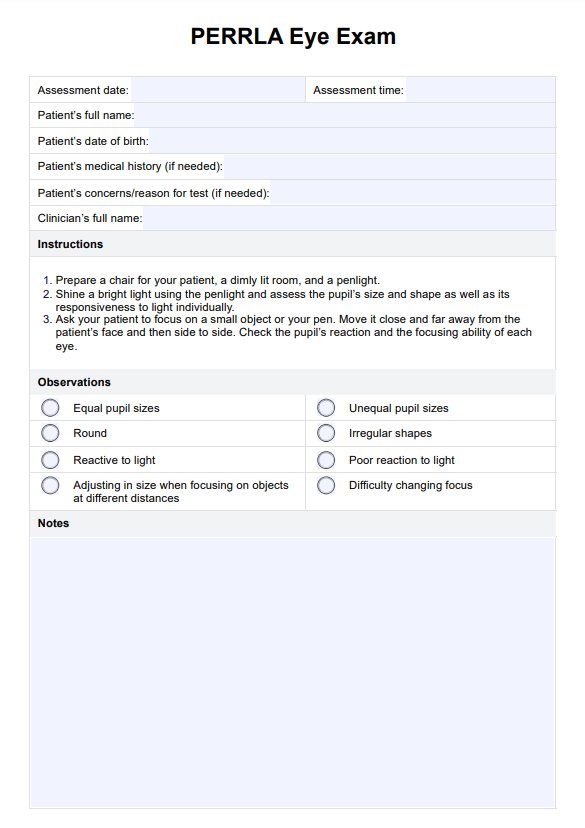You can finish this test in five minutes.

PERRLA Eye Exam
Conduct the PERRLA Eye Exam to check on your patient’s pupils and see if their current state is well or if they point to a possible eye condition.
Use Template
PERRLA Eye Exam Template
Commonly asked questions
The PERRLA Eye Exam is a non-invasive exam. The healthcare professional handling you will simply need to assess your pupils, which they can do using their eyes and a penlight.
A Eye Exam invasive?
It is limited to identifying signs of potential problems. It doesn’t diagnose anything.
EHR and practice management software
Get started for free
*No credit card required
Free
$0/usd
Unlimited clients
Telehealth
1GB of storage
Client portal text
Automated billing and online payments











